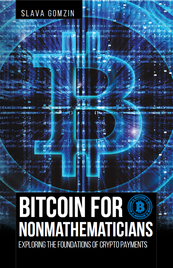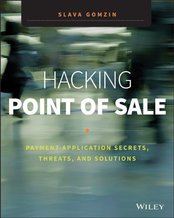Loop and Coin are just two examples of mobile payments startups that try to bring an invention to market by marrying their new technology to an existing payment card system. The reason is simple: Their tech is more likely be accepted by the mainstream if merchants can reuse their existing payment hardware and software.
Both Loop and Coin are trying to keep alive the dying magnetic stripe payment system. However, they have another important “feature” in common: By replacing the original plastic cards with digital ersatz, they unintentionally simplify the flow of the stolen credit card data.
Loop
The core know-how of Loop is transforming the traditional magnetic stripe reader device (MSR), which merchants use to accept the magnetic credit and debit cards, into the contactless reader. The powerful magnetic field is generated by the mobile payment device (instead of the payment card’s magnetic stripe), so the card data can be transmitted wirelessly to the same reader.
Although this technique is very interesting from a technical point of view, there are several potential issues with accepting Loop as a mainstream method of payment. First, there is no real innovation here. It’s just a combination of old technologies. Second, from a security point of view, it’s the same nightmare as existing credit cards. It can be even worse because all my cards are now stored in one place. And the card data is not protected when it is transmitted from the mobile device and throughout the system, just like with traditional plastic cards.
Finally, Loop is less convenient than plastic cards, especially, with the fob required for iPhone. Instead of just swiping the card, I need to: hold both the fob and the phone, unlock the phone, find and start the app, select the card, then press the button on the phone and at the same time “swipe” the fob. Not to mention the fact that many card readers are deeply “hidden” inside the customer-facing hardware, such as a bank ATM or gas station’s fuel pump, and therefore cannot be reached by the Loop device.
But most importantly, this system is dangerous to merchants, issuers, and acquirers because it simplifies the credit card fraud process. Hackers don’t need to make the physical plastics anymore – they just load the dump of stolen card data into the single device, and voilà!
Loop’s developers say the app identifies the cardholder before the new card is added to the wallet, so it is impossible to add someone else’s card into your wallet. This “security control” is very weak, and anyone familiar with the design of magnetic payment cards can find a workaround. This protection measure is implemented by comparing the cardholder name, which is encoded on magnetic Track 1 of the credit or debit card, with the name on the Loop app account. A hacker who wants to enter and use the stolen track data can easily fake the name on the card and match it with the name on the Loop account because the cardholder name on the magnetic track is not protected by encryption or digital signature and can be changed to any combination of letters without affecting the payment approval process.
Coin
The idea of Coin is similar but more elegant: replacing several payment cards with a single card-like sophisticated device. The technology behind Coin is pretty impressive, but it raises exactly the same security concern as the Loop device. Normally, when carders want to use the stolen card data to make a purchase in a brick-and-mortar store, they need to produce the fake plastic card, which must look like a real credit card, and encode it with the stolen magnetic tracks. But with Coin, there is no need to produce a good looking physical plastic anymore. The stolen data can be encoded directly into the Coin device.
Carders would have to overcome one obstacle: taking a picture of the real card so they can enter the new card information into Coin through the iPhone or Android app. But I think generating a realistic virtual image of a credit card (so it can be photographed instead of the real card) is cheaper than creating a physical counterfeited card, which requires special equipment such as a PVC printer, an embosser, a tipper, etc.
I am sure that hackers, carders, and cashers will be among the first beta testers (and subsequently the most appreciative users) of such “innovative” technologies. More effective security controls — if they are feasible at all — must be designed for the mobile wallet apps that reuse the existing magnetic stripe technology.




 RSS Feed
RSS Feed



